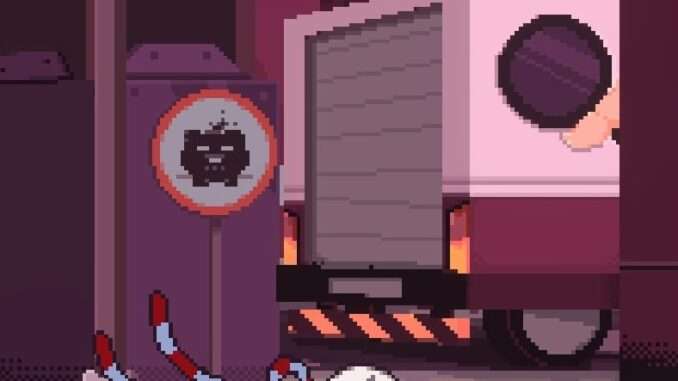
Guide to Basics
Before you even bother reading this…
Play the damn tutorial!
One of the biggest reasons why fighting games are difficult to get into is because everyone doesn’t bother to learn how to play whatever fighting game they got. Fighting games are not like those simple games where you can figure out how to play and what you are doing wrong simply by pressing buttons. These kinds of games can be complicated at minimum.
Before you play a round, the game will ask you if you would like to play the tutorial. If you skipped the tutorial, you can find it again in training on the main menu.
This guide should only be used if you still don’t have any idea what to do. This also only covers the very basics of the inputs and controls, not the mechanics or the tech. Wait for someone else to do it. I’m too lazy.
Controls and Basics
You may have noticed your mouse doesn’t work in the menus. That is normal.
For navigating the menu, you have to use WASD to navigate the menus, ENTER to select, and ESC for back. Some other menus may also use Q and E for switching categories and U for toggling range in lobby searching or inventory in Virtual Frontier.
Unfortunately, as far as I know the menu controls can’t be changed. What you can change in the setting are the character controls in game.
The default P1 (player one) controls are as follows.
- WASD for movement
- J – light attack
- K – medium attack
- L – heavy attack
- I – special attack
- O – grab
- Y – collab (would be called something along the lines of an “assist” in other games)
- P – burst
- Space – Item (this only applies in Virtual Frontier)
- Light attacks hit fast but generally lack range and damage.
- Medium attacks generally have good range and sits somewhere around the middle of light and heavy.
- Heavy attacks are slow but powerful, often with a good amount of stun.
- Grabs/throws work at a very short range and are very punishable but deal a good amount of damage and can work through Yagooguards.
- Collabs (or more commonly known as assists in other games) bring in another character of your choice to help you out in some way.
- Burst is an ability that has limited use but gives you room to breathe by launching your opponent away. Bursts are punishable if blocked as they also leave you stuck in place for a moment. Bursts charge as damage is done to you.
For Light, Medium, and Heavy attacks, you also have a crouch attack done by also holding down while pressing the respective button. Crouch attacks generally hit low, punishing your opponent for using their standing block. These attacks are otherwise similar to the standing versions.
There are also jump attacks too. These are done when off the ground and punish your opponent for using their low block.
There is also a universal input for some attacks. Overhead attacks (M+H) apply similarly at jump attacks but are not as obvious. Sweeps (Down + Forward + H) are like other crouch attacks but they trip the opponent giving you a moment to breathe. While crouching heavy is supposed to be the universal launcher, I somewhat disagree (Looking at you Ayame).
There are also command normals. These work like the other normal attacks but also require directional input.
You guard by holding in the opposite direction of the opponent. Crouch blocks are the same thing but also down. The game also has an instant guard mechanic that rewards risk by lowering the recovery time after a guard if you guard just before an attack lands.
Specials
I skipped what the special button does on the last section. It will be covered here. This section will cover stuff that can be easily found in the command list.
In Idol Showdown, you have access to three types of special attacks or more.
The three main motion inputs used are quarter circle forward, quarter circle back, and down twice to replace what would normally be the DP input (they normally look like a Z on a joystick and are a pain in the ass to do without practice).
The special button along side a directional input allows you to quickly use these attacks (simplifying the use of special attacks). Forward special and neutral special both usually use the quarter forward attacks, down special usually uses the light down twice special, and backwards special uses the light quarter backwards special attack. There is no up special but there is a air special. the air special just uses whatever special input can be done in the air or it’s own thing.
Light and medium specials are for general use and usually work similar to one another with some variation. These are categorized as special attacks in the command list. The heavy version is a beefed up version that uses a bar of meter. Most of the characters also have a down twice special that does something completely unique while using a bit of meter. The specials that use meter are categorized as star special attacks.
The universal “super star attack” or just “super” input is quarter circle forward Special. These use two bars of meter and are usually powerful attacks. Bursts and assists are also put in this section of the command list for some reason.
For burst, you can use either the dedicated button or L+M+H.
There are two assists you can use per character. The first one uses the smaller meter on top of the main meter and is used by pressing the collab button or L+H. The second one is like an extra super and also uses regular meter instead. The input for that is quarter circle back special.
- I will not go over the specific frames and attacks of each character. That is way too much work.
- There are exceptions… (+extra notes)
- Not everything written in this guide is universal to all the Hololive members in the game. Some characters lack something or have more than the others. Some characters have inputs that break the rules mentioned here.
Some examples are:
- Coco and Ayame have no command normals.
- Ayame’s launcher does not exist.
- Coco has a bunch of special inputs that use grab.
- Coco can hurt others in knockdown with a butt plug.
- Coco and Aki’s down twice special does not use meter.
- Coco’s quarter forward specials are very different other then the fact that they are grabs that lead to the same result.
- What the hell does miss said taiwan on stream’s down twice special do?
You get the point.
This fighting game lets the general Hololive fan (or anyone really) who wants to play, play by alleviating the learning curve a bit. For a traditional fighting game, the input difficulty is on the easier side.
Just enjoy the game and don’t get frustrated when you lose or get completely dominated by the opponent. In a fighting game, somebody is going to lose. Losing constantly and getting better until you win for once is the joy of playing fighting games. Just pick any Hololive member (preferably one you already like the most) and play.


Coco’s down twice special is actually super useful, superchat cancelling into it basically lets you break out of the the end lag of any of her other specials, most noticeably the light flame breath which sets up some good juggling as burning keeps them from doing air recovery for a while